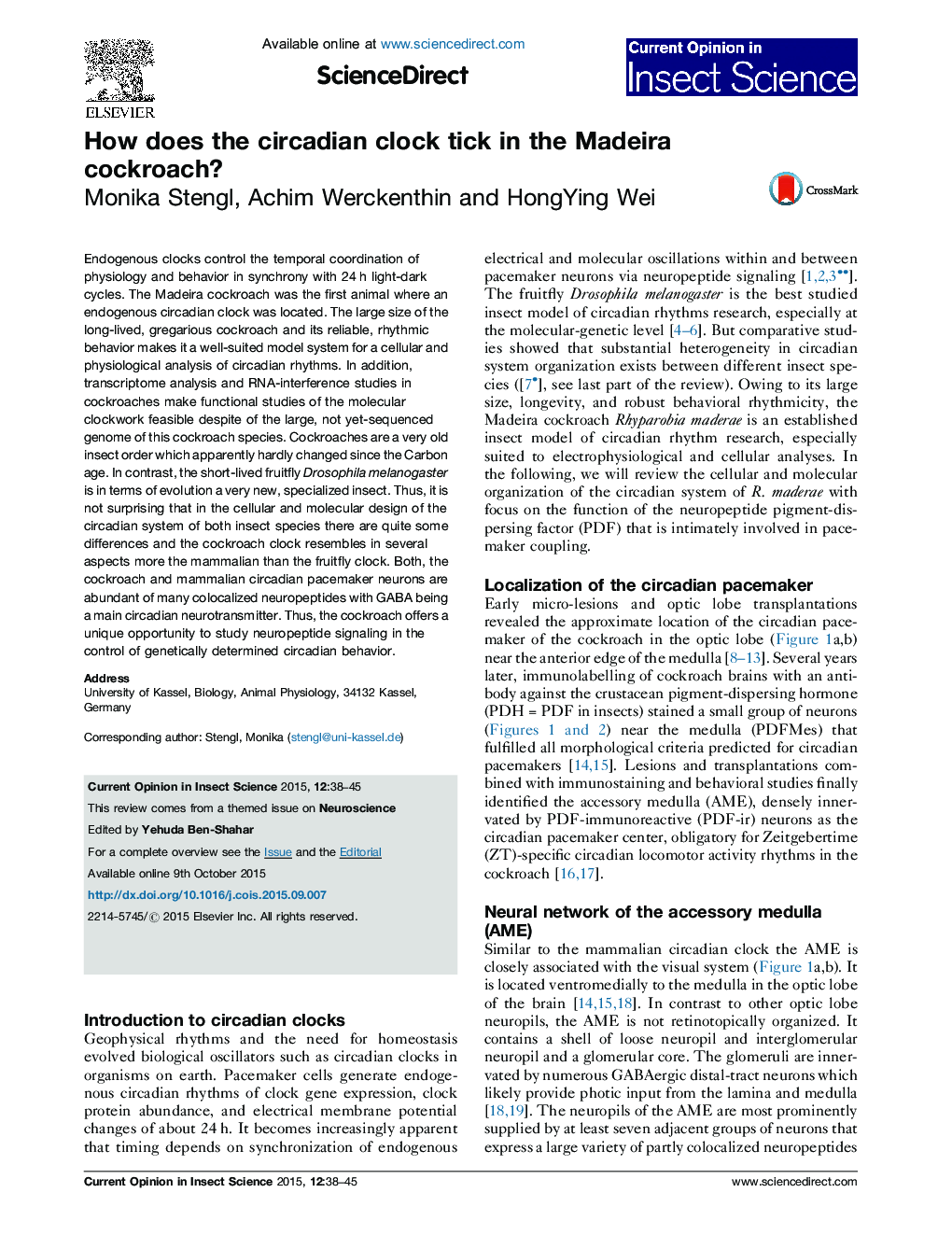| Article ID | Journal | Published Year | Pages | File Type |
|---|---|---|---|---|
| 6373959 | Current Opinion in Insect Science | 2015 | 8 Pages |
â¢Circadian clock cells in different species are especially enriched in neuropeptides.â¢The cockroach clock is more similar to the mammalian than to the Drosophila clock.â¢PDF in insects and VIP in mammals share critical functions in circadian clocks.â¢PDF-dependent synchronization of circadian pacemakers apparently gates clock outputs.â¢Presynaptic and postsynaptic pacemakers with autoreceptors for their own neuropeptide can contain the same colocalized neuropeptides forming self-organizing neuronal circuits ('labeled lines').
Endogenous clocks control the temporal coordination of physiology and behavior in synchrony with 24Â h light-dark cycles. The Madeira cockroach was the first animal where an endogenous circadian clock was located. The large size of the long-lived, gregarious cockroach and its reliable, rhythmic behavior makes it a well-suited model system for a cellular and physiological analysis of circadian rhythms. In addition, transcriptome analysis and RNA-interference studies in cockroaches make functional studies of the molecular clockwork feasible despite of the large, not yet-sequenced genome of this cockroach species. Cockroaches are a very old insect order which apparently hardly changed since the Carbon age. In contrast, the short-lived fruitfly Drosophila melanogaster is in terms of evolution a very new, specialized insect. Thus, it is not surprising that in the cellular and molecular design of the circadian system of both insect species there are quite some differences and the cockroach clock resembles in several aspects more the mammalian than the fruitfly clock. Both, the cockroach and mammalian circadian pacemaker neurons are abundant of many colocalized neuropeptides with GABA being a main circadian neurotransmitter. Thus, the cockroach offers a unique opportunity to study neuropeptide signaling in the control of genetically determined circadian behavior.
